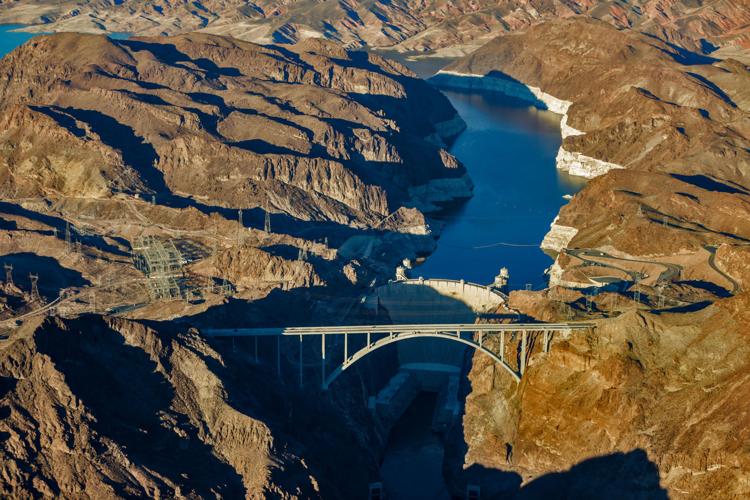Once again, a section of the Colorado River leads a national environmental group’s list of the U.S.’s most endangered rivers.
But American Rivers says it’s put the Lower Colorado River No. 1 on its list not because there’s no progress toward fixing its problems. Instead, the group believes progress has been made in recent years, particularly the near-completion of a three-state agreement to reduce water use across the Lower Colorado River Basin to prop up Lake Mead, said Matt Rice, the group’s Colorado River program manager.
“We got very close to getting a signed Drought Contingency Plan at the end of 2016,” Rice said. “Now, we see an opportunity to get it across the finish line. We are doing this to help propel it past the finish line.”
Some key points about the river and its endangered ranking:
“Lifeblood of the Southwest”
The river supplies drinking water to Tucson, Phoenix, Los Angeles, San Diego and Las Vegas. It has a $900 billion annual economic impact on the Lower Basin, including $600 million worth of crops grown on more than 5 million acres, the group says, citing Arizona State University research.
In 2013, American Rivers put the entire Colorado River atop its endangered list because of the drought. Another reason: A 2012 Bureau of Reclamation study warned that the river’s supply could fall by 2060 to as little as half of the seven-state river basin’s annual needs, due to population growth and climate change.
That was the river’s third No. 1 most-endangered ranking in 23 years, and its seventh time on the top 10 list. After that, the Upper Colorado River ranked second in 2014 and the river through the Grand Canyon was No. 1 most-endangered in 2015. The latest No. 1 ranking covers the Colorado through the Lower Basin states of Arizona, California and Nevada.
Why it’s endangered
The three states and the feds came close to but didn’t reach a Drought Contingency Plan agreement last fall to reduce water use by 1.2 million acre-feet annually if necessary to keep Lake Mead from falling below dangerous levels. (An acre-foot supplies about two typical Tucson households per year.) Then, it appeared that Arizona was nearing a statewide Drought Contingency Plan-Plus agreement to conserve 1.2 million acre-feet over three years. But such an agreement isn’t ready now, because of many disputes over terms between the Central Arizona Project and the Arizona Department of Water Resources, several Arizona cities including Tucson, and Indian tribes.
The environmental group is also concerned about proposed Trump administration budget cuts on federal programs to save water and support the three-state drought plan. The administration proposes cutting the Interior Department by 15 percent, although no specific cut has been proposed for the Bureau of Reclamation, which is under Interior and operates the reservoirs.
Reactions
Arizona Department of Water Resources Director Tom Buschatzke said he doesn’t know enough about other rivers to say if the Colorado belongs at the top, but “I think with the right actions taken by the Lower Basin states, and the Upper Basin moves forward on its plan, we could prevent it from becoming endangered.”
He added, “I do agree that the health of the river is important. I’ve been spending the last four years of my life on some version or another of the DCP.” He criticized American Rivers only for failing to mention internal California issues including the fate of the imperiled Salton Sea near El Centro that also stand in the way of an agreement.
A top CAP official disputed 2013’s endangered ranking, but the agency said Monday it’s more important to talk about what’s needed to be done than its view on the ranking.
The Central Arizona Water Conservation District, which manages the project, “is acutely aware of the risks facing the Colorado River. Whether it’s labeled as endangered or not, it doesn’t change the challenges before us or the work that needs to be done. There is a structural deficit in the Lower Basin that needs to be addressed .... We have had some successes by staying out of shortage for two years, but more needs to be done,” the agency said.
Kathleen Ferris, a longtime water attorney and former state water agency director, agrees the river is endangered, saying, “The river is overallocated. We’re having good weather this year, but one good year doesn’t take that away.”
How the river might get off the list
“Getting the DCP done and DCP Plus in Arizona done would be a tremendous step,” said American Rivers’ Rice.





